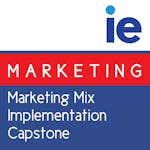Description
This programme will teach you fundamental data skills as well as an in-depth understanding of Google Analytics and marketing analytics. You'll learn to use Excel, Data Studio, and Tableau to analyse data and build models, as well as to create informative data visualisations.
Syllabus:
Course 1: Introduction to Data Analysis
Descriptive Statistics
- In this course, you will learn about data types, measurement centers, and the basics of statistical and mathematical notation, as well as measures of spread, shape, and outliers as associated with quantitative and inferential statistics.
Spreadsheets
- This course will take you from the basics of spreadsheets to manipulating data, analyzing data, and visualizing data in spreadsheets.
Manipulate Data
- In this course, you will learn basic spreadsheet function: sort and filter data, use text and math functions, split columns, and remove duplicates, how to summarize data with aggregation and conditional functions, and how to use pivot tables and lookup functions.
Visualize Data
- In this course, you will build data visualizations for quantitative and categorical data; create pie, bar, line, scatter, histogram, and boxplot charts, and build professional presentations.
Project: Interpret a Data Visualization
- In this project, you will investigate an interactive data dashboard in order to gain insights. You'll write a brief report outlining each insight and how you obtained the data to reach your conclusion from the dashboard.
Project: Analyze Survey Data
- In this project, you will analyse data from over 500 companies listed on the New York Stock Exchange using statistics and spreadsheet programmes such as Excel. You will also forecast financial metrics for a company of your choice from the NYSE dataset using three different scenarios.
Course 2: Data Visualization
Introduction to Data Visualization
- In this lesson you will learn how to evaluate the quality of data visualizations and build high quality visualizations, starting with the fundamentals of data dashboards.
Design
- In this lesson you will learn to implement the best design practices, ad to us the appropriate chart for a particular situation.
Data Visualizations in Tableau
- This course teaches you how to build data visualizations in Tableau using data hierarchies, filters, groups, sets, and calculated fields, as well as map-based data visualizations in Tableau.
Making Dashboards & Stories in Tableau
- In this course you will learn how to build interactive Tableau dashboards and tell impactful stories using data.
Project: Storytelling With Data
- In this project, you will apply what you've learned about data storytelling and evaluate a data set to create a storey for a question of your choice centred on an e-commerce retailer.
Project: Build Data Dashboards
- In this project, you will use Tableau to create interactive dashboards that will be used to discover and communicate data insights. You'll use a dataset of flight delays in the United States to visualise the quality of airlines and airports, as well as find the best times to fly.
Course 3: Google Analytics
Intro to Google Analytics
- In this course, you learn how to use Google Analytics to evaluate your audience, measure the success of your acquisition and engagement efforts, evaluate your user’s conversions to your goals, and use those insights to plan and optimize your marketing budgets.
Advanced Displays, Segmentation, and Filtering
- Learn how to understand data by using Google Analytics for creating advanced graphical displays and segmenting audiences.
Acquisition, Conversion, Ecommerce, & Attribution
- Learn how to use UTM tagging for campaigns and the channel customization process, and step through the fundamentals of using Google Attribution 360.
Dashboards, Custom Reports, Alerts
- Learn about the fundamentals of creating custom reports, and step through the process of building data dashboards in Google Analytics & Data Studio.
Project: Advanced Displays, Segments & Views
- Make more detailed observations using advanced reporting displays and features, and map GA advanced segments to their constituencies. Then, configure view filters and settings to refine and enrich raw GA data for use in audience identification for remarketing and testing.
Project: Navigating, Reports, & Dashboards
- Campaign URLs must be decoded, built, and troubleshooted. Customize your channels to get the most out of your analytics measurements and attribution. Then, using advanced reporting techniques such as GA custom reports and Data Studio dashboards, visualise data insights.
Course 4: Marketing Analytics
Introduction to Marketing Analytics
- In this course you will learn how marketing data is collected and distributed, the common questions we seek to answer in marketing, and how to gather and evaluate the necessary metrics. You’ll also learn how to set business goals and define the metrics used to determine if you’ve met those goals. This course will also explore ways to develop confidence in our reporting skills and how to make every analytics project actionable.
Metrics That Matter
- This course will show you how to identify the correct metrics to be using, and how to use a variety of frameworks to report on your findings. Additionally, you’ll learn how to create an Analytic Brief, and explore the most popular tools for collecting data across every marketing channel.
Analyzing Marketing Data
- This course will explain how to put all your marketing analytics skills in practice. You’ll go hands-on with various formulas to calculate the most common marketing metrics.
Macro Digital Analysis
- In this course, you will learn how to zoom out and explore the world of analytics from a different perspective. You’ll learn how to calculate important business metrics such as Market Size, Brand Equity, Trends, Competitors, and your Net Promoter Score.
Project: Crafting an Analytic Brief
- In this project, you will create an analytic brief to answer important questions about your company, your customers, and how you will test and learn from your marketing analytics initiative. To complete this exercise, you will use a sample company or a company you are familiar with.
Project: Create a Campaign Report
- In this project, you will create a comprehensive marketing report based on a sample dataset using statistics, spreadsheet programmes, and presentation software. You'll be asked to investigate how well a sample company performed in relation to its objectives, as well as perform specific marketing-related calculations to report on campaign performance and audience insights.









